What is a Heatmap? MEXC Heat Map User Guide
Related Articles
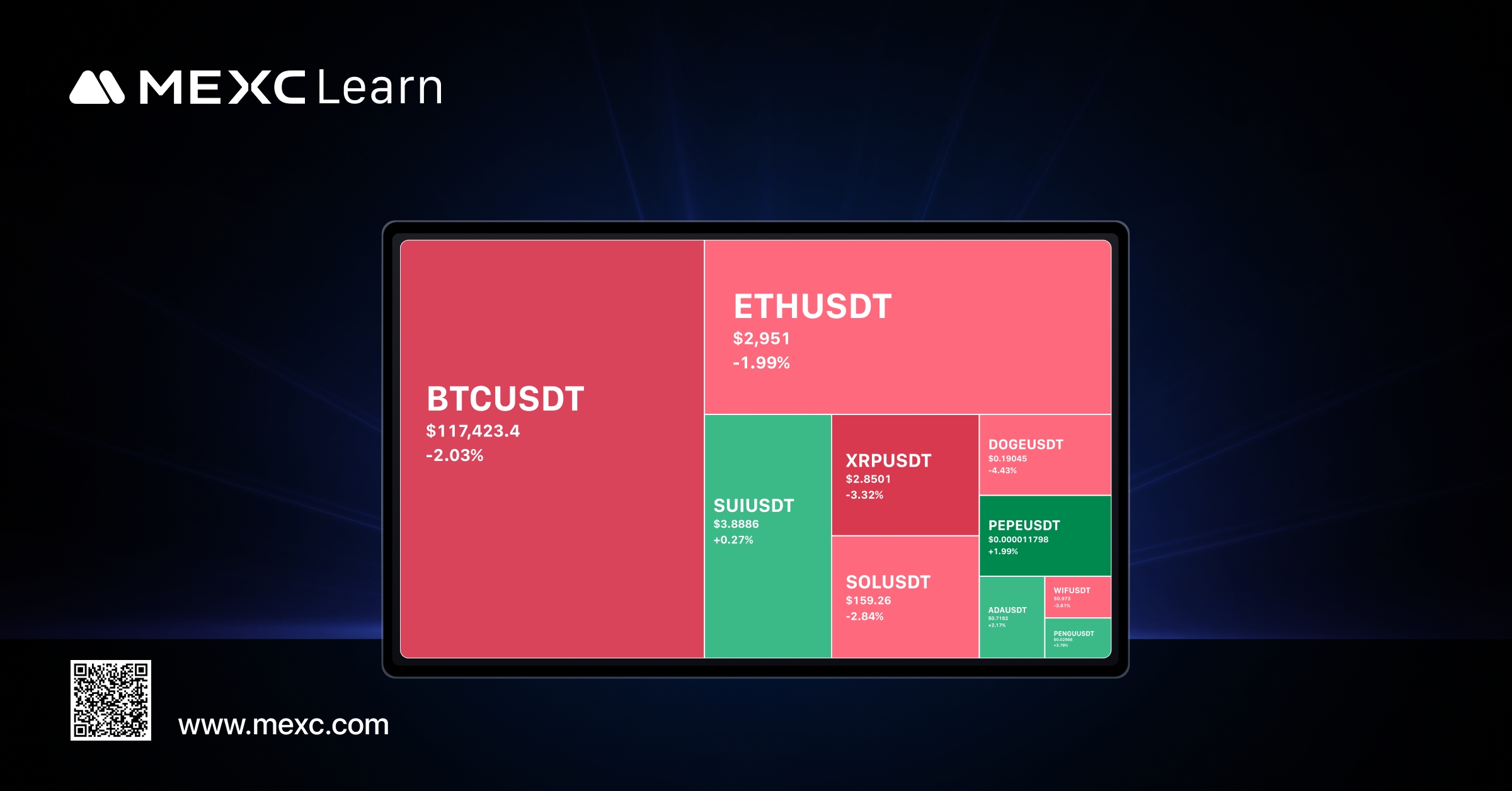
1. What is a Heatmap? A Visual Tool for Tracking Market Sentiment
The Futures Heat Map is a visual data analysis tool provided by MEXC. It allows users to quickly grasp the real-time performance of trending trading pairs on the platform through intuitive graphical displays. By using the heatmap, users can view the top 10 to top 50 most active trading pairs within a selected time range, ranked by either trading volume or price change, helping them quickly identify active market opportunities.
Currently, the MEXC Heat Map only supports Futures contract data. It enables users to analyze the performance of Perpetual Futures contracts based on trading volume or price change percentage.
On the MEXC Futures Heat Map, each Futures trading pair is represented by a colored block. The larger the block, the higher the trading volume. The deeper or more vibrant the color, the greater the price change over the past 24 hours. By observing these visual indicators, users can easily identify which contracts are drawing significant market attention and experiencing strong volatility.
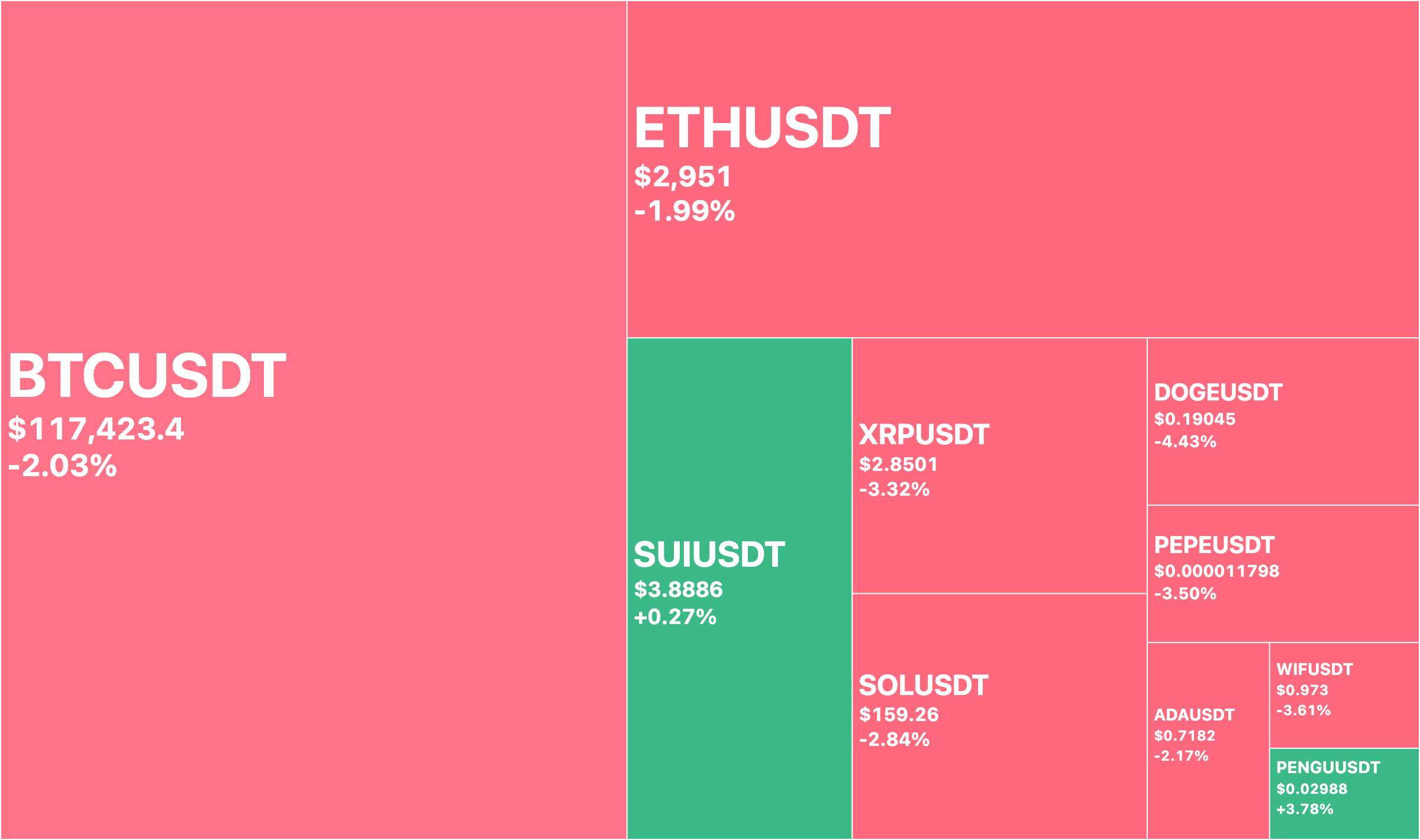
As shown in the image above, the BTCUSDT Perpetual Futures appears as a large red block on the heatmap, while PENGUUSDT is represented by a small green block. This indicates that although the BTCUSDT contract experienced a significant price drop over the past 24 hours, it maintained a high trading volume, likely related to the pullback after BTC broke above $120,000. In contrast, the PENGU contract saw a slight price increase but with low trading volume. By comparing the two, traders may consider prioritizing strategies related to BTC.
2. Key Features and Advantages of the Futures Heat Map
2.1 Quickly Identify Market Hotspots
The heatmap visualizes trading volume and price movements, enabling users to quickly spot the most actively traded contracts in the market. For example, a large red block typically represents a high-volume contract with significant price depreciation, indicating strong bearish momentum. In contrast, a large block shaded green may suggest a high-volume contract experiencing a notable price surge, pointing to bullish activity.
2.2 Accurately Filter Trading Opportunities
The heatmap allows filtering by trading volume or 24H price change, making it a useful tool for developing trend-following or reversal strategies. When combined with technical analysis tools such as TradingView or candlestick patterns, this filtering function can significantly improve the accuracy of trade decisions.
2.3 Visual and Interactive Experience
Compared to traditional data tables, the heatmap offers a more intuitive interface. The use of color and block size makes key trading signals immediately visible, eliminating the need for complex calculations.
3. How to Read the Futures Heat Map
In the heatmap, larger blocks represent higher trading volume, which may also indicate heightened market sentiment and greater price volatility. This can be further confirmed by comparing the 24H price change data. By focusing on contracts represented by larger blocks, traders can quickly identify the most actively traded instruments. Here are a few typical examples:
Case 1: High Trading Volume and Strong Price Drop
A contract appears as the largest block on the heatmap with a deep red color, indicating that the token has experienced a significant price drop and high trading activity over the past 24 hours.
Case 2: High Trading Volume and Sharp Price Increase
A large block shaded deep green suggests that the token is seeing active trading amid a sharp rise in prices.
Case 3: Low Trading Volume but High Price Volatility
A small but dark-colored block may represent a contract in the early stages of a breakout or one influenced by concentrated capital. Such contracts may be suitable for short-term speculation by high-risk traders.
Risk Warning: The heatmap reflects historical data only, and market sentiment can change rapidly. Due to the limited data dimensions, it is strongly recommended to combine the heatmap with other technical indicators and analysis tools to ensure more accurate trading decisions.
4. Futures Heat Map User Guide: Web and App Instructions
Currently, the MEXC Heat Map supports Futures data only.
4.1 Web Version
Visit the MEXC official website and log in. From the top navigation bar, click Markets, then select Heat Map on the Markets page to view the heatmap.
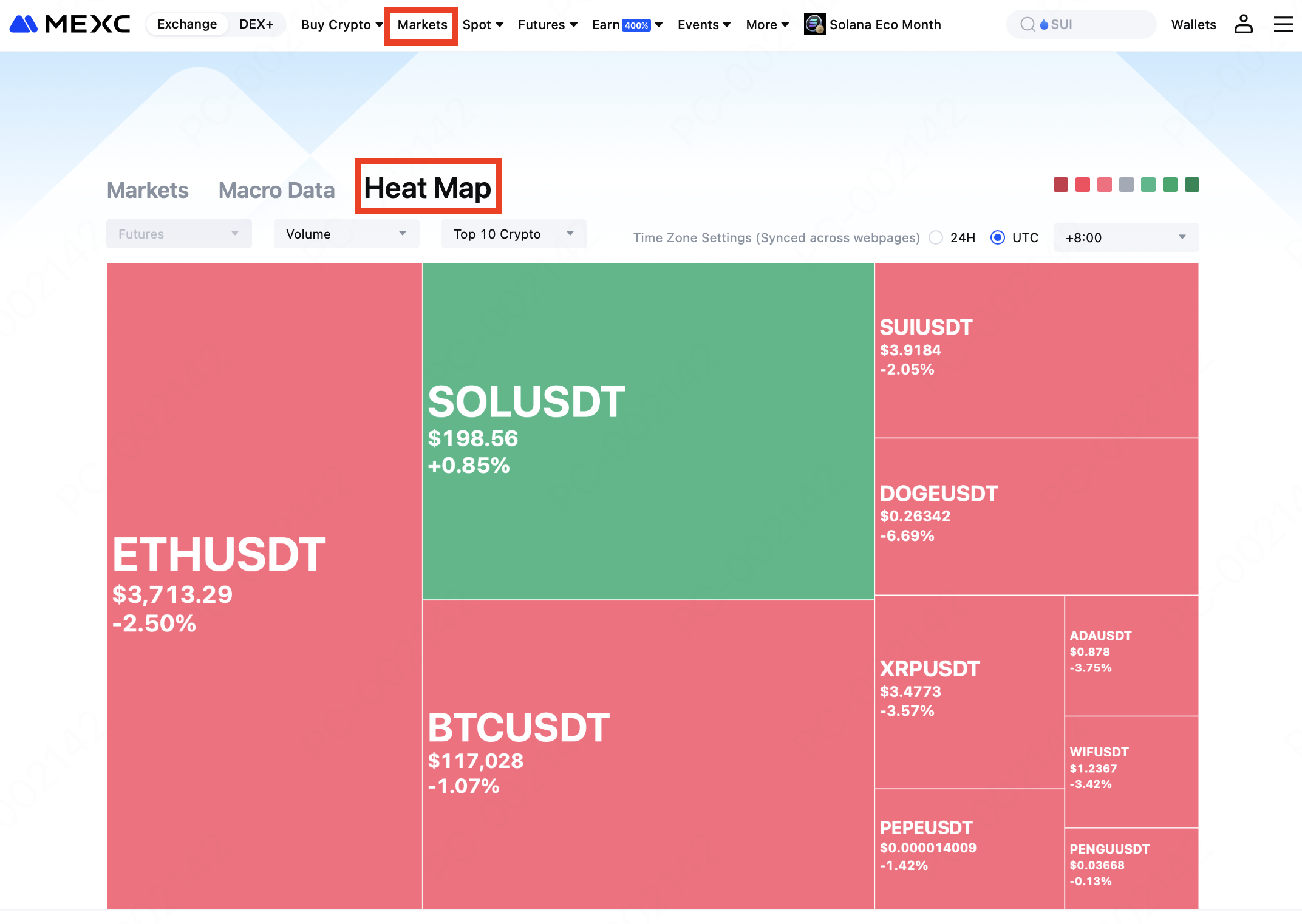
You can choose to filter the heatmap by Volume or 24H Change, with support for displaying up to the Top 50 Crypto. If you prefer a specific time zone, you can adjust it on the far right side of the heatmap.
Different colors represent different ranges of price change. Hover your mouse over the color scale on the right to view the exact percentage range each color represents. When you hover over a specific block on the heatmap, it will display the trading pair name, trading volume, and 24H price change. Clicking on a block will take you directly to the corresponding trading page, where you can begin trading the selected Futures pair.
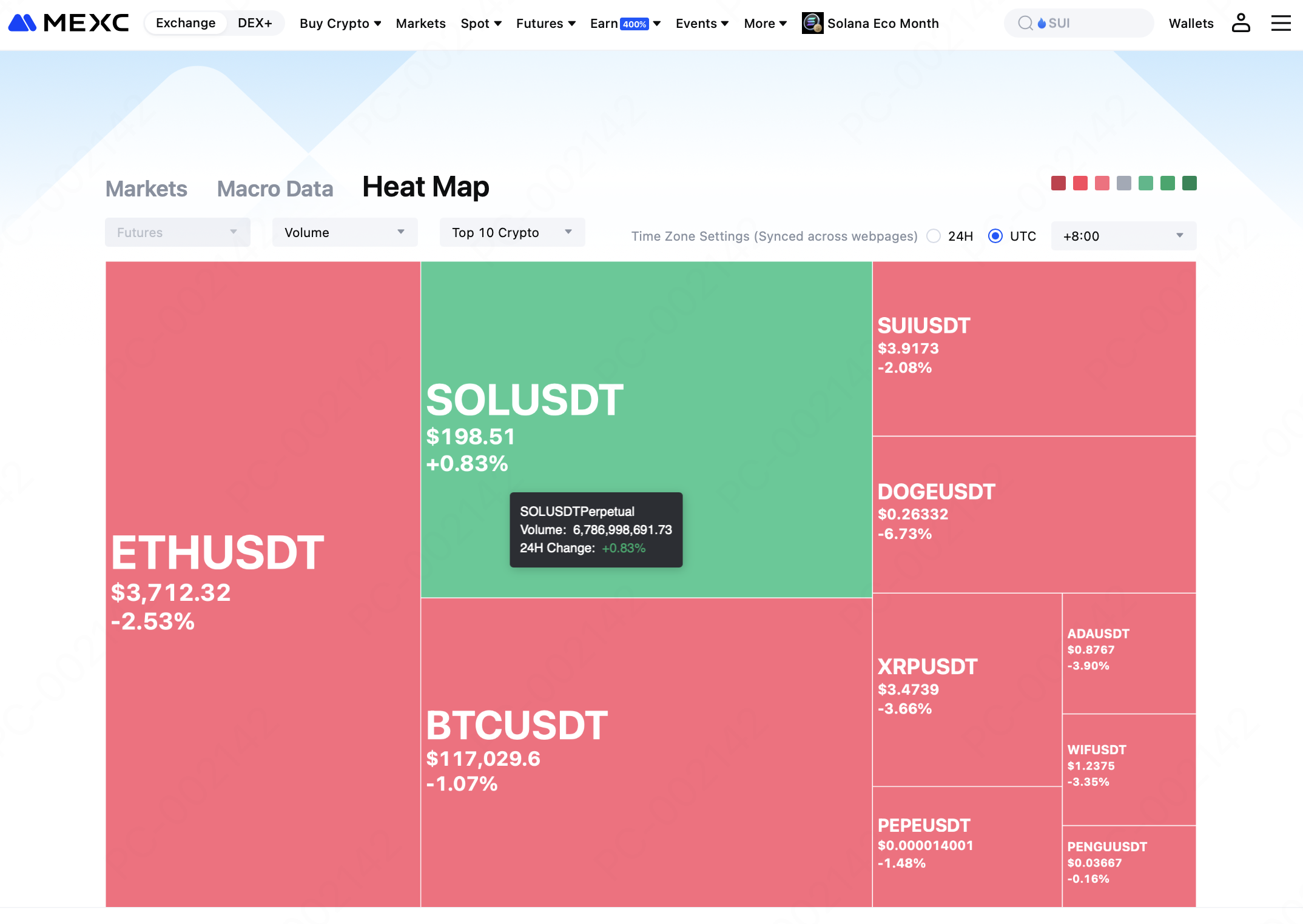
4.2 App Version
Open the MEXC App, tap More on the homepage, then go to Futures, Market Data, and tap Heat Map to view the Futures Heat Map
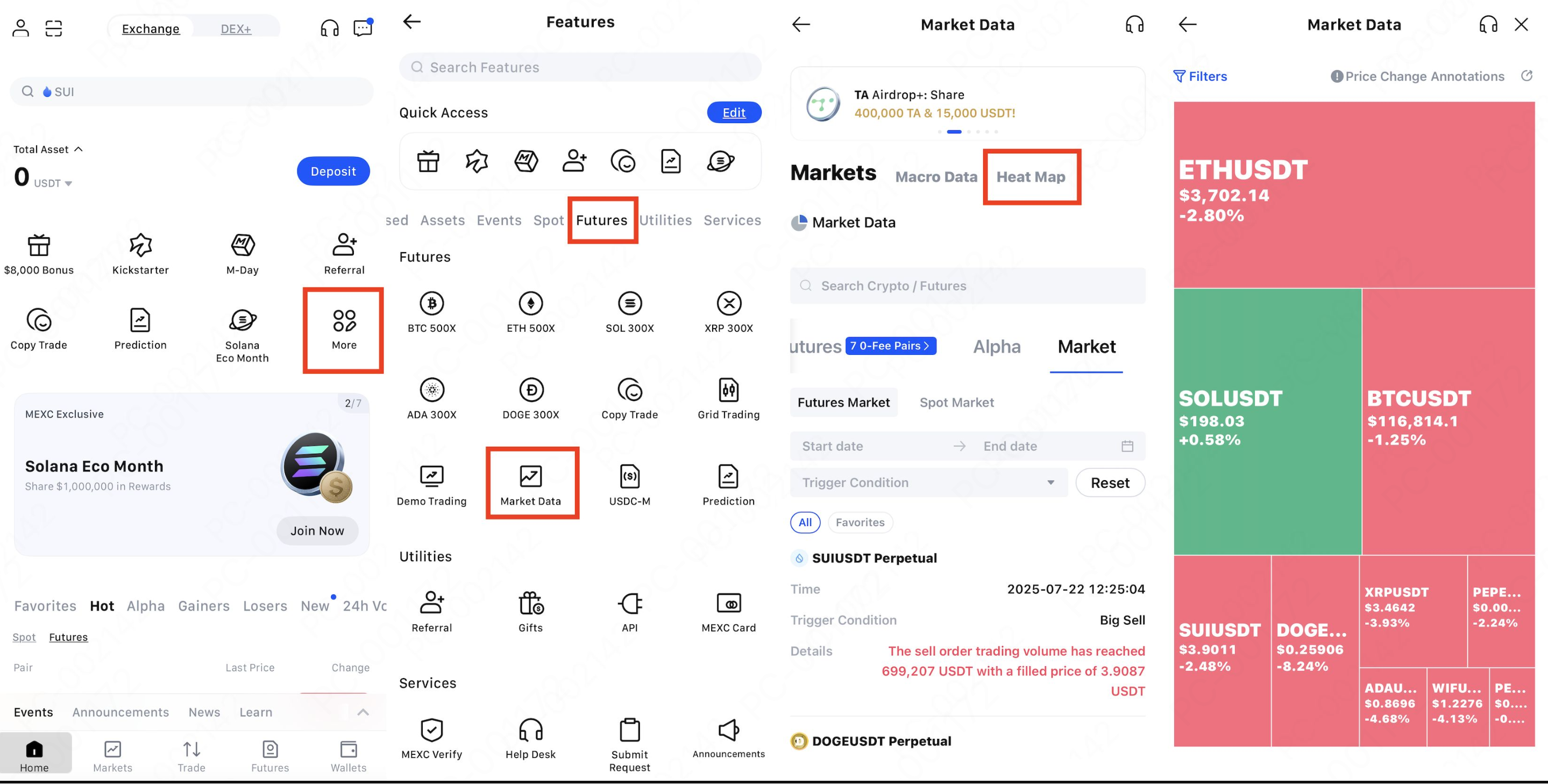
On the Heat Map page, tap Filters in the top-left corner. You can choose to filter by Volume or 24H change, with support for up to the Top 50 Crypto.
If you prefer a specific time zone, you can adjust it in the same filter menu. Different colors represent different levels of price change. Tap the gray Price Change Annotations button to view the corresponding percentage ranges for each color.
When you tap a specific block on the heatmap, it will display the trading pair name, trading volume, and 24H price change. Tap Trade Now to go directly to the relevant trading page, where you can begin trading the selected Futures pair.
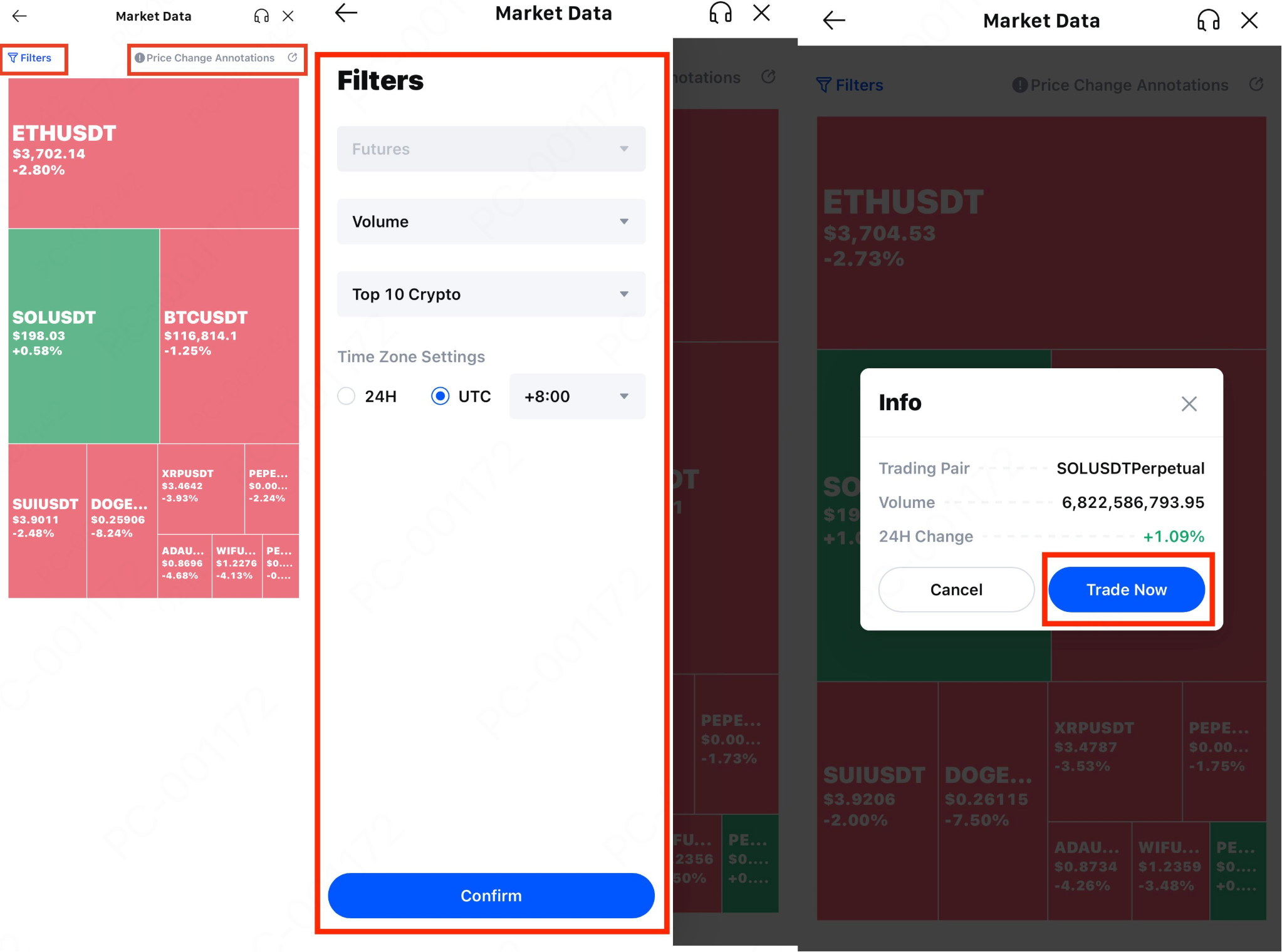
Compared to the Web version, the App version includes a sharing feature. On the Heat Map page, tap the circular share icon in the top-right corner to open the sharing interface. At the bottom, choose either Download or Share to complete your sharing action.

*BTN-Start Your Futures Trading Journey&BTNURL=https://www.mexc.com/futures/BTC_USDT*
5. Conclusion
The MEXC Futures Heat Map is a valuable tool for improving trading efficiency. Compared to traditional data tables, the visualized heatmap offers a clearer, more intuitive display of trading volume and 24-hour price changes across Futures trading pairs, making it especially useful for quickly identifying market hotspots.
By visually presenting volume and price movement, users can efficiently filter for actively traded pairs and develop more logical entry and exit strategies. However, it's important to remember that the heatmap is an auxiliary tool, no single indicator can replace comprehensive market analysis.
We recommend using the Futures Heat Map in combination with other trading indicators and proper risk management tools to make well-informed decisions and better navigate market volatility.
Recommended Reading:
- What Is the Stochastic Indicator (KDJ)?: A beginner-friendly guide to understanding K-line movements and mastering entry and exit timing.
- What is Parabolic SAR?: Helps traders hold positions during trends and signals exits during price reversals.
- How to Use TradingView on MEXC: A complete introduction to TradingView on MEXC, ideal for all futures traders looking to enhance their market insight and trading precision.
Disclaimer: This material does not constitute advice on investments, taxes, legal matters, finance, accounting, consulting, or any other related services, nor is it a recommendation to buy, sell, or hold any assets. MEXC Learn provides information for reference only and does not constitute investment advice. Please ensure you fully understand the risks involved and invest cautiously. All investment decisions and outcomes are the sole responsibility of the user.